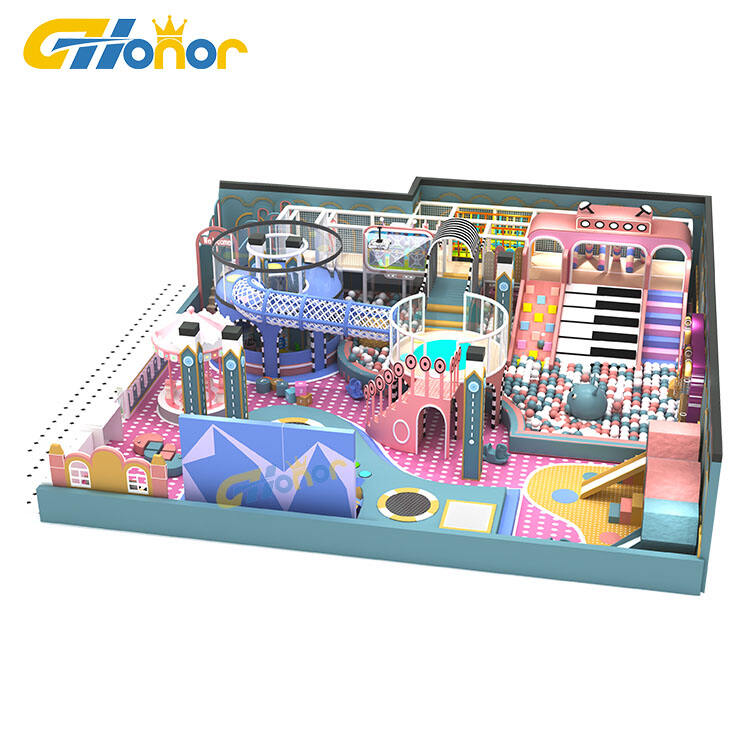Amusement park design is a multidisciplinary process that combines architecture, engineering, landscape design, and storytelling to create immersive, functional, and engaging leisure environments. This specialized field focuses on balancing visitor experience, safety, operational efficiency, and thematic coherence, transforming a collection of rides and attractions into a cohesive destination that delights and captivates guests of all ages. At the heart of amusement park design is storytelling and theming, which guide the overall vision and create a sense of place. Designers develop a central narrative or set of interconnected themes—such as fantasy worlds, historical eras, or adventure landscapes—that inform every aspect of the park, from ride concepts to architectural styles, color palettes, and even plant selection. For example, a pirate-themed park might feature weathered wood structures, nautical motifs, and lush tropical landscaping to evoke a Caribbean island setting, while a space-themed park could use sleek metallic finishes, starry lighting, and futuristic architecture to suggest a journey through the cosmos. Theming is applied consistently across all elements, including signage, food service areas, and staff uniforms, to reinforce the narrative and enhance immersion. Spatial planning is a critical component of amusement park design, involving the strategic arrangement of rides, attractions, pathways, and facilities to optimize visitor flow and maximize enjoyment. Designers analyze factors such as ride capacity, visitor demographics, and peak crowd patterns to create layouts that minimize congestion and reduce wait times. This often involves grouping related attractions into “lands” or zones, each with its own theme and mix of rides, dining, and shopping options. Pathways are designed to be intuitive, with clear sightlines to key attractions and landmarks that guide visitors through the park without confusion. Rest areas, shaded spots, and scenic overlooks are strategically placed to provide respite and encourage exploration of less crowded areas. Ride integration is another key consideration, as designers work closely with engineers to ensure attractions fit seamlessly into the overall design while meeting safety standards. This includes determining optimal locations for rides based on noise levels (e.g., placing high-energy roller coasters away from quiet family areas), sightlines (e.g., positioning iconic rides like ferris wheels as visual anchors), and infrastructure requirements (e.g., ensuring roller coaster tracks do not disrupt pedestrian paths or utility lines). Interactive and live entertainment venues, such as theaters or performance stages, are placed to draw crowds without causing bottlenecks, often featuring flexible seating to accommodate varying audience sizes. Accessibility and safety are paramount in amusement park design, with compliance with local and international regulations (e.g., ASTM, IAAPA standards) guiding decisions about walkway widths, ramp gradients, emergency exits, and ride restraints. Designers incorporate features such as wheelchair-accessible pathways, sensory-friendly zones for visitors with autism, and clear signage with universal symbols to ensure the park is welcoming to all. Safety is also integrated into the physical environment, with rounded edges on structures, non-slip surfaces, and barriers around ride perimeters to prevent accidents. Sustainability is an increasingly important aspect of modern amusement park design, with designers incorporating eco-friendly practices such as energy-efficient lighting, water conservation systems, and native plant landscaping to reduce environmental impact. Green building materials, solar panels, and waste management facilities are integrated into the design to align with global sustainability goals and appeal to environmentally conscious visitors. Post-opening, amusement park design is an ongoing process, with designers and operators collaborating to refine the layout based on visitor feedback, update theming to keep up with trends, and integrate new attractions as the park evolves. This adaptability ensures the park remains fresh and relevant, continuing to attract visitors for years to come. In essence, amusement park design is about creating more than just a collection of rides—it is about crafting a memorable, immersive experience that engages the senses, sparks imagination, and creates lasting memories for every visitor.
